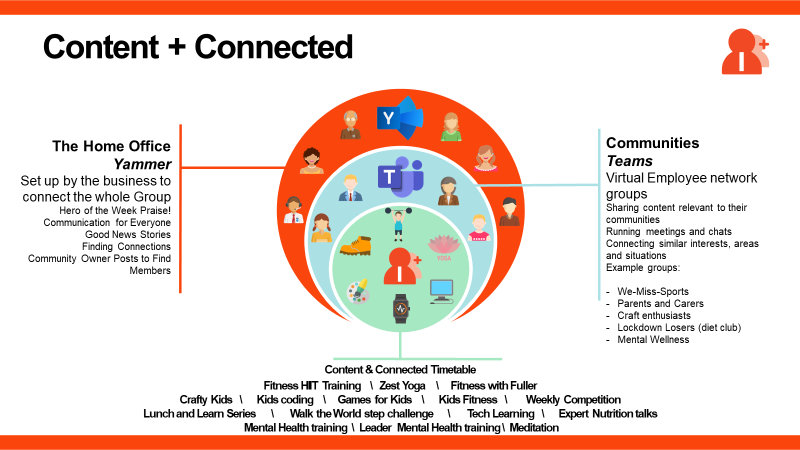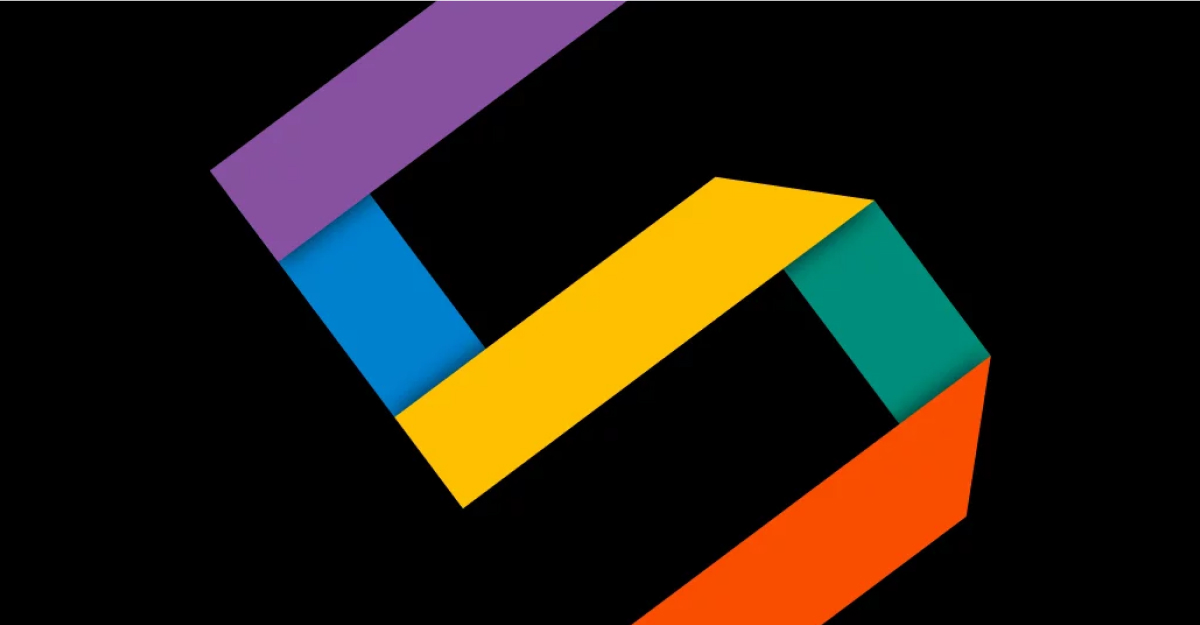
Tips for keeping the team spirit alive during testing times
For those of you in HR and internal comms roles, maintaining a sense of connectedness during a pandemic is, undoubtedly, testing. We asked our Chief People Officer, Thea Fineren, to reflect on the last few tumultuous months and share the lessons she’s learned.
Here, Thea gives her advice on:
- How to recreate a sense of camaraderie across your remote workforce
- The role of leaders in a crisis
- What makes a good communications strategy?
- Looking after your people
- Managing productivity
Thea has over twenty years’ experience in talent and people management, international recruitment and global talent strategies. She joined the IT Lab group – now Content+Cloud, in November 2019, making her a relatively new member of our senior leadership team when the pandemic struck.
Who moved the Nespresso machine?
It’s a fact; be it the water cooler, the coffee machine or, in my case, the cookie jar, we’re all mourning that time when we would hang out and share stories.
I take my hat off to established virtual companies that have achieved that same buzz, but for us more used to congregating inside bricks and mortar, we miss it. We’ve lost a well-loved part of our culture where we come together on work, and life in general.
I am pretty sure that, in part, our culture will never return to that. We may never again pass the bat around the ping pong table, or ‘double dip’ at beer o’clock. We’ll never again hire a photo booth for the Christmas party and see how many employees can fit inside. And as for apple bobbing….
In what feels like an instant, everything changed.
The gauntlet that our ‘change-agent’ COVID threw at us is to rip up the old world of employee engagement, forcing us to start anew. The challenge – like any change programme, is that whatever the new version is, it needs to be better on the other side. Well, at least if you’re expecting your people to come with you on that journey.
It was with this recognition that, back in March, we took stock of what our employee experience was across our teams, businesses and countries. We began building, what we thought at the time, was a temporary employee engagement strategy.
And here we are today, still hankering for some semblance of normality but slowly and surely adapting.
How can you recapture that sense of camaraderie?
Not easily, but we’re finding ways to bring groups together in different digital environments. People still want to huddle; they just huddle digitally now. We’ve learned that if you can find a common interest and provide a nudge or reason for folk to come together, they will.
These may be employee network groups, shared interest classes or even problems to solve. New connections were forged that, in the former physical workplace, wouldn’t have happened. Physical barriers were replaced with more parity; our permanent home-workers are now just as much in the mix as our normally office-based staff.
It (COVID) has democratised access to networking. People have gravitated towards what matters to them, ideas are shared, friendships made, and support networks created.
We’ve realised that if you provide a place that’s interesting enough to hang out in, or give people something in return, they will come together. That sense of belonging and community that we yearn for can still happen. And what’s more, it’s open to everyone!
Here’s a snapshot of the new world employee engagement programme we created:

What role does leadership play in keeping people connected?
Our leaders are where the rubber hits the road, smack in the centre of the information highway. They’re critical to ensuring that communication is accessible, frequent, authentic and as accurate as it can be in this year of unknowns.
We were hell-bent on communicating what we knew as soon as we could and more importantly, what we didn’t know. We forced ourselves to share the bad news as well as the good, even when it wasn’t necessary to impart. We led our comms by instinct, without much reflection. In the year where everyone’s lives got turned upside down, building trust was incredibly important to us.
Leaders needed to acquire skills overnight. They needed to be informants, medics, counsellors, logistics and change agents. Equipping the leadership team with the appropriate tools and information was fundamental to staff connectivity and engagement.
And we learned that no matter how broad your communication strategy is, and how many channels you push a message through, they will rarely score bullseye unless delivered personally by the leader. Never has the pastoral side of a people leader’s role been in such demand.
So, just get the leaders to cascade key messages, right?
Hmm, if only it were that simple! The role of the leader has, in our experience, been the most impactful, but our people consume information in a tonne of different ways.
We found the only way to ensure that the messages land is to use every channel possible, which in our case meant every single Microsoft app on the market. Let ‘go broad’ be your guiding principle. We use Yammer, Teams channels, text, video messages, Microsoft forms, Power BI, SharePoint sites, weekly digest mailers, leader forums and good old email. All of which have their place. It’s an enormous effort, but it is appreciated.
And make sure your comms are a two-way marriage. In times of extreme uncertainty, it calls for listening hard and seeking out opportunities to hear specific employee experiences. We learned that it was important not to second guess how people are feeling. Don’t even try to walk in other people’s shoes – better simply to ask.
We use Office Vibe as our anonymous employee engagement platform, which is an invaluable insight for us to engage based on actual, not assumed, employee opinion. We’re also surveying continuously around appetite to get back into offices and home office requirements.
How should employee health and wellbeing influence your engagement strategy?
I don’t think we’re unique on this point, but one of the heartening reflections of COVID-year is that people have each other’s backs more than ever.
It could have gone either way. Times of adversity can bring out the worst human behaviours, but for us, it was a catalyst for positive change and forced us to put any differences aside and emerge stronger.
I once described the first few weeks as feeling like the leadership team were in an insanely intense escape room. Lives were at stake. And we were acutely aware that our every decision mattered, and those decisions didn’t always have the benefit of much insight.
Employee safety and wellbeing remain, without doubt, our guiding principle.
On a practical front, Covid helped us to raise our game on physical wellness initiatives like a step challenge, yoga, online fitness classes, diet clubs and meditation. And we introduced a new programme called Content+Calm, which is around emotional wellbeing and includes an external training series for all staff on mental health. Again, we check the impact of these initiatives through specific questions on our engagement platform.
Incredibly, since March, in a time when employee health and wellbeing are most at risk, our feedback scores for wellness have shot up, with a 14% positive increase.
How did we ensure staff engagement in terms of productivity?
As the world turned upside down, we decided to defer year-end appraisals and instead give people the autonomy to do what they believed they needed to do. To some extent, we made a conscious decision to take our eye off the ball and trust in our people.
And it worked. If anything, the biggest challenge is to get staff to step away from their home offices and find the distinction between home and work.
While we might have temporarily paused on the more orthodox performance tracking, we continue to listen intently to our clients. And the message is clear; our teams don’t need anyone dictating what is required to get our clients through this year. They’re smart enough to work it out, and our clients tell us so, consistently.
We trusted our people to step up and muck in, and they did, instinctively. What our teams have designed, built and managed in a year of such adversity is nothing short of remarkable.
I am eternally grateful that, for me, ‘productivity decline’ is one less problem to worry about this year!
For more insights, join Thea and our team at Digital Revolution Live
Join us on Tuesday 10th and Wednesday 11th November for Digital Revolution Live where a diverse panel of keynote speakers and subject matter experts discuss the people and technical strategies for navigating the COVID era.
And if you’d like to learn more from Thea, tune in at 14:20 on the 11th, when she is joined by psychologist Wendy Kendall, our Chief Digital Officer Tim Wallis, and Richard Pearce, the Talent Partner from ECI Partners LLP.
To explore the agendas and register for this free event, click the button below.


